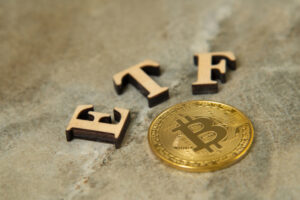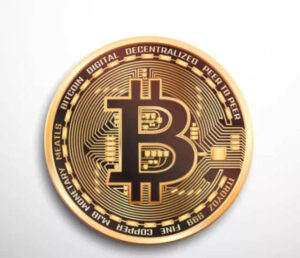In the rapidly evolving world of cryptocurrencies, Ripple and its associated token XRP have carved out a unique niche. However, understanding Ripple’s inner workings, the tokenomics of XRP, and its legal hurdles can be a complex task. This blog post aims to unpack the intricacies of Ripple, highlighting its significance and the partial victory it recently secured against the U.S. Securities and Exchange Commission (SEC).
Ripple and XRP: An Overview
Ripple is a groundbreaking digital payment protocol designed to facilitate quick and direct money transfers between two parties. Particularly popular for international transactions, Ripple operates on blockchain technology, much like many other cryptocurrencies. Its associated digital currency, XRP, provides liquidity for transactions within the Ripple network and is a leading player in terms of market capitalization.
XRP stands out in the crypto landscape due to its pre-mined structure. At the inception of the network, 100 billion XRP tokens were created, with Ripple Labs, the company behind XRP, initially holding around 60%. The remaining tokens are designed to stimulate market maker activity, be sold to institutional buyers, or be used for strategic investments. XRP’s role as a bridge currency within the RippleNet ecosystem intends to enhance liquidity for cross-border transactions and reduce transaction costs. However, the ultimate utility of XRP is dependent on the adoption level of the RippleNet system by financial institutions.
The Legal Landscape: Ripple’s Battle with the SEC
In 2020, Ripple found itself embroiled in a legal tussle with the SEC. The SEC filed a lawsuit against Ripple Labs and its executives, CEO Brad Garlinghouse and co-founder Christian Larsen, alleging failure to register XRP as a security before offering around $1.3 billion worth of tokens.
The bone of contention was whether the sale of Ripple’s XRP tokens constituted investment contracts, thus requiring compliance with federal securities laws. The SEC, under Chairman Gary Gensler, argued that most cryptocurrencies fulfill the criteria of securities, demanding issuers to undergo an extensive, costly registration process before public sales, and requiring exchanges to register as broker-dealers before listing them.
A Significant Legal Victory: The Court’s Ruling
In a recent development, the U.S. District Court for the Southern District of New York ruled that the sale of XRP tokens on exchanges and through algorithms did not constitute investment contracts. However, the court declared that Ripple’s initial sale of around $728.9 million worth of XRP to institutional buyers, hedge funds, and other parties, constituted unregistered offers and sales of investment contracts, thereby violating federal securities laws.
The court differentiated between these institutional sales and “programmatic sales,” which included the personal sales of XRP by Larsen and Garlinghouse. It was concluded that programmatic buyers did not necessarily share the same expectations as institutional buyers. Consequently, Ripple’s motion for summary judgment on programmatic sales was granted.
This ruling led to a surge in XRP’s value, and Gemini, a cryptocurrency exchange, indicated it might list the token. Yet, while this decision marks a partial victory for Ripple, legal experts believe it falls short of fully clarifying the broader issue of when a digital asset constitutes a security under U.S. law.
Ripple’s Reaction and Implications for the Crypto Industry
Following the court’s order, Garlinghouse expressed gratitude and optimism via Twitter, reiterating his belief that Ripple is on the right side of the law and history. The ruling introduces a level of regulatory clarity, although it simultaneously underscores the urgency for comprehensive cryptocurrency regulation. Clear, robust rules are vital for further innovation and development in the thriving world of digital assets.
As we navigate the digital revolution, Ripple and XRP continue to command attention, promising to play a pivotal role in shaping global finance. Despite facing legal challenges, their potential to transform the financial landscape through speed, scalability, and low transaction costs remain immense. The future will reveal the full scope of Ripple’s impact on our financial systems and its ultimate position within the evolving narrative of cryptocurrency regulation.
Decoding the Ripple Phenomenon: An In-Depth Look into Ripple and XRP
As the digital revolution continues to shape our lives, the rise of cryptocurrencies and blockchain technology has ushered in a new era of financial transactions. Among the plethora of cryptocurrencies available today, Ripple stands out as one of the most intriguing. In this blog post, we delve into the ins and outs of Ripple and XRP, from their inception to their present-day significance.
Understanding Ripple and XRP: A Primer
Ripple serves a dual purpose—it’s both a platform and a currency. The Ripple platform, also known as RippleNet, is an open-source protocol conceived to allow swift, affordable international money transfers. Ripple’s raison d’être is to streamline cross-border transactions, making them significantly more efficient compared to traditional methods.
On the other hand, XRP is the digital currency that operates within the Ripple network. It plays the role of a bridge currency to other currencies. Every currency within the Ripple platform can be exchanged for XRP and vice versa, facilitating seamless transactions between different currencies.
Ripple’s Beginnings: The Birth of a New Financial Infrastructure
The inception of Ripple can be traced back to Ryan Fugger in 2004, but the protocol as we recognize it today began its development in 2012, under the aegis of Ripple Labs Inc. Chris Larsen and Jed McCaleb were the key players in the creation of the XRP cryptocurrency and the Ripple payment protocol.
The underlying vision propelling Ripple was the idea of a decentralized monetary system empowering users to create their own money. Ripple’s architecture addresses the worldwide issue of quick and cheap remittances, enabling instantaneous and low-cost money transfers anywhere globally.
How Ripple Works: Making Cross-Border Payments Seamless
Ripple employs a type of blockchain technology known as the Ripple Protocol Consensus Algorithm (RPCA). Unlike Bitcoin’s energy-intensive proof-of-work system, Ripple’s consensus algorithm mandates network participants to agree on transaction validity, thereby ensuring speed, security, and scalability.
When a transaction is initiated, it is ratified by a list of trusted validators, and upon consensus, the transaction is incorporated into the Ripple ledger. This entire process takes a mere 3-5 seconds, positioning Ripple as significantly speedier than other major cryptocurrencies.
XRP, Ripple’s internal cryptocurrency, serves as a bridge currency, permitting any currency to be swapped for it to expedite transactions. This strategy curtails liquidity costs and facilitates real-time money transfers.
Ripple’s Impact: The Ripple Effect
Ripple and XRP have garnered substantial traction among banks and other financial institutions. As of now, Ripple prides itself on partnerships with over 300 financial institutions across 40 countries, including industry giants like American Express and Santander.
Ripple’s transaction speed and low costs make it an appealing alternative for these institutions, traditionally reliant on the slower and pricier SWIFT system for international money transfers.
Ripple Today: Controversies and Triumphs
In spite of its revolutionary technology, Ripple has not been without its share of controversies, particularly concerning the legal status of the XRP token. The U.S. Securities and Exchange Commission (SEC) launched legal action against Ripple, alleging that it conducted unregistered securities sales.
However, Ripple recently scored a partial victory in court, with the ruling that the sale of XRP tokens on exchanges did not constitute investment contracts. This ongoing legal tussle has brought some regulatory clarity to the cryptocurrency industry, albeit many questions still remain unanswered.
Despite the ongoing court case, Ripple and XRP continue to exhibit immense potential for transforming the financial landscape. The speed, scalability, and low cost of transactions offer a compelling alternative to traditional banking methods. As the digital revolution progresses, Ripple is a project to keep an eye on, as it promises to play a significant role in the evolution of global finance.
The Tokenomics of Ripple (XRP)
The tokenomics of Ripple (XRP) stands out, primarily due to its pre-mined structure. In contrast to many other cryptocurrencies, all 100 billion XRP tokens were created at the inception of the network. Ripple Labs, the entity behind the XRP token, initially held the majority of these tokens (around 60%). The remainder of the tokens are intended to be distributed to incentivize market maker activity, sold to institutional buyers, or put towards strategic investments.
This distribution strategy has sparked debates as it places a significant amount of control in the hands of Ripple Labs. The role of XRP as a bridge currency within the RippleNet ecosystem aims to enhance liquidity for cross-border transactions and reduce transaction costs. Nonetheless, the actual utility of XRP hinges on the extent of the adoption of the RippleNet system by financial institutions.
In conclusion, Ripple and XRP occupy a unique position in the expansive landscape of cryptocurrencies. With their cutting-edge technology and a vision to revolutionize the world of finance, they represent a remarkable breakthrough in global transactions. Yet, the complexities surrounding the regulation and legal status of the XRP token have cast a long shadow, underlining the challenges that digital currencies face in today’s rapidly evolving world. Despite these hurdles, Ripple’s promise of a more efficient, cost-effective, and inclusive financial system cannot be ignored. As we look towards the future, the role of Ripple and XRP in shaping the global financial landscape could be transformative, underpinning the continued growth and innovation within the cryptocurrency sector.






